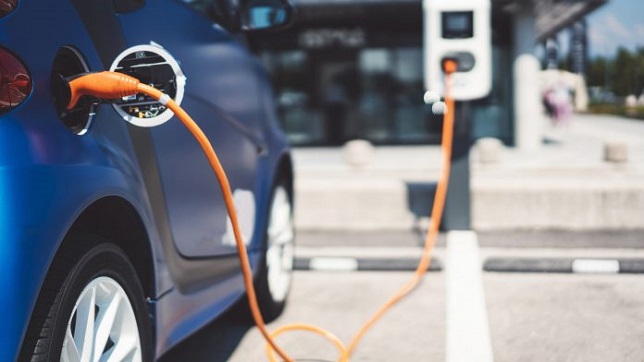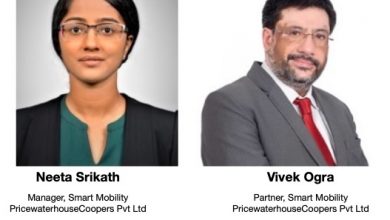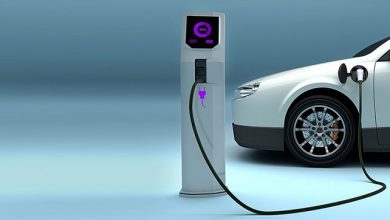Electric Vehicle Charging System: A bittersweet entry from Tesla

There’s been a lot of buzz among the dwellers in Automotive Electrification in the last month, especially among people keen on EV Charging System. In November 2022, Tesla made a not-so-expected move by opening their proprietary charging connector design (North American Charging Standard (NCAS)) to the automotive industry [1]. They invited charging infrastructure operators and vehicle manufacturers to integrate Tesla charging connectors and ports into their systems so that seamless usage of Tesla’s own charging infrastructure can be assured.
The automotive world is still debating over this benefaction to the industry. The question is ” Whether NACS is helpful in progressing forward the industry or is it a mere gimmick to ensure the market presence? Let’s look at the aspects.
What’s there for Charging Infrastructure Operators
Until now the Charging Station (Electric Vehicle Supply Equipment) manufacturers were not offering any Tesla charging capability and Tesla vehicles needed to be charged from Tesla’s own charging facility. (Recently Tesla started selling charging adaptors so that their vehicles can charge from other stations using the adaptor). This situation can be avoided if EVSE manufacturers start integrating Tesla Plug as the de facto standard along with others (CCS2/CHAdeMO etc.). For EVSE manufacturers this addition will not be a technically demanding problem, moreover, they will get a chance to expand the customer base with Tesla vehicle also under the radar. On the other hand, Tesla can ensure their vehicle will get wider charging facilities even if they are not under the purview of Tesla’s charging infrastructure. Needless to say, it’s a win-win situation for both parties.
2. What’s there for Vehicle Manufacturers (OEM)
Tesla’s Supercharging network has 60% more NACS posts than all the CCS-equipped networks combined. For all other OEMs, this is a treasure trove lying there unutilized. So having a NACS charging capability will be an additional benefit. And for Tesla, their standard is getting accepted across the industry and they have full control over it.
For detailed understanding let’s see how the battery charging system works in Electric vehicles.
Charging Types
AC Charging: AC Input is provided to the vehicle inlet and an On-Board charger (OBC) will convert this AC to DC power and charge the Battery. Along with OBC, there can be multiple ECUs (BMS, VCU etc.) in action so that the battery is protected against any malfunction and other vehicle functions are managed properly. SAE standards classify AC Charging into Level 1 & Level 2 based on the voltage and power rating. As per IEC Standard, based on the connection method, this can be Mode 1, Mode 2 or Mode 3 Charging.
DC Charging: The power conversion from AC to DC takes place outside to the vehicle in the charging station. The charging station supplies DC power to the vehicle to charge the battery. Here OBC has no role to play since power conversion takes place outside of the vehicle. This method can be referred to as Level 3 charging as per SAE and Mode 4 as per IEC.
Charging Protocols & Connector
Charging Plugs: Physical connection between EVSE and EV happens through the charging plugs. This is where things get complicated and interesting. As with every new technology, stakeholders involved went on with their ways of designing its proprietary connectors and protocols to align with their goals and requirements. We can see this in figure 2.
Charging Protocols: Along with the power transfer, communication between the vehicle and the charging station is having crucial importance. This is where different protocols jump in and define the methods. We can see that like the connector diversification, protocols also differ based on geography. (e.g., ISO, SAE, IEC, CHAdeMO, GB/T). In the course of time, the industry ended up with assorted connectors and protocols, making it difficult for a single ubiquitous charging method.
Automotive development is known for its slow but robust development life cycle due to the importance of safety involved. For an OEM, Chassis re-design, components sourcing, supply chain management, internal wiring modification and prolonged hardware validation to add an additional charging inlet is not going to be a near-term achievable goal. Is there any alternate path they can go with? Can OEM go forward without any physical modifications and yet utilize the charging infrastructure offered? Let’s contemplate.
Can OEMs start to think of using a charging adaptor as an amicable solution? i.e., without any modification in the vehicle hardware, using an external adaptor will this be possible? Let’s examine the likely hood assuming the situation vehicle have a CCS2 compatible charging inlet and would like to charge with a Tesla charging station.
Interfacing the charging Connector.
Tesla follows North American standard J-1772 for the connector design with the same pin functionality but with modifications in the design and hardware pin placement. Also, in CCS 2 connector AC charging is compliance with SAE J 1772. This ensures an adaptor can directly map the Tesla pin to respective CCS2 pins.
For DC Charging as a deviation from the normal standards Tesla uses the same pins for AC charging whereas in CCS2 there are separate pins allocated for AC and DC Charging. Mapping can be achieved with an external switch which can route input power lines to output AC or DC lines based on the switch position.
Vehicle Architecture.
We can see from Figure.4 Tesla’s charging architecture has only a slight difference from what other OEMs follow. In Tesla architecture, from the Charging Port power lines are routed to OBC and the DC charge selector switch. AC or DC charge will be determined by BMS by interacting with Charge Port Controller. BMS will then control the switch position and OBC to choose the preferred way of charging. For other OEMs, a remote distinction can be seen where the charge port controller is implemented or whether the master logic lies in BMS or VCU. But the functionality will remain the same.
Protocol handling software
All the hardware interaction makes sense only when the software effectively comprehends the protocols and establishes the communication. On top of the hardware standards discussed standard protocol definitions are embedded so that bi-directional communication is possible between EV and EVSE.
For AC charging SAE J 1772 relies on IEC 61851-1/ IEC 61851-23 which is applicable for both Tesla and CCS2 handling.
- The proximity line provides information on the connection status
- By duty cycle modulation of control pilot line type of charging and individual state information will be exchanged.
4.5.1 For DC charging, communication between the EV and EVSE
shall be power line communication over the control pilot line
as depicted in DIN 70121.
4.5.2 The North American Charging Standard is compatible with
“plug and charge” as defined in ISO-15118. [NACS Technical-Specification-TS-0023666.pdf]
For DC Charging Tesla is compliant with DIN 70121 and uses PLC communication over Control Pilot Line. CCS2 is governed by ISO-15118 which is an evolved standard from DIN 70121. This ensures that CCS2-based vehicles can communicate with the Tesla charging station without issues in protocol management. DC Charging communication can also be taken care of without much effort. These aspects ensure with little tweaks in the existing software communication can be managed effectively.
Accelerated electrification adoption demands immense efforts from the industry players. Technology development process improvements will bear fruit only if they serve the purpose of the customers. One of the central issues in EV adoption reluctance arises from range anxiety. Battery technology improvement, fast charging and charging infrastructure ramp-up are the verticals industry is focused on nowadays. Along with providing enough charging station availability, it is foremost to ensure interoperability so that irrespective of the OEMs, vehicle owners get benefitted from the facility. Interoperable individual protocols under the hood of ubiquitous master charging protocols with higher level degrees of freedom for novice innovations choice should be something the industry can hope and strive for.
Ref:
[1]: NACS Technical-Specification-TS-0023666.pdf
[2]: Opening the North American Charging Standard | Tesla
[3]: The battle between ISO 15118 and DIN SPEC 70121 (switch-ev.com)
Author:

Sreeraj Arole
Architect, Automotive Electrification
Wipro Limited
Sreeraj Arole has more than 11+ years of Automotive industry experience. He holds M.Tech in Automotive Electronics and B.Tech in Electronics and Communication. At present, he is working as an Architect in Automotive Electrification Centre of Excellence team at Wipro Limited. His Previous Publication includes SAE & Automotive Testing Expo Stuttgart. Present areas of interest are Electric Vehicle Architecture, EV Charging System & Software-Defined Vehicle.
Published in Telematics Wire



